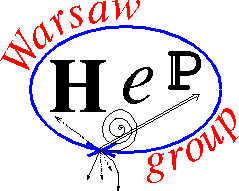Parameterization of the radio signal from Ultra High Energy Cosmic Rays in the GRAND experiment
Lech Wiktor Piotrowski, PhD (Lech-Wiktor.Piotrowski@fuw.edu.pl)
The origin of ultra-high-energy (UHE) cosmic rays (CR) is one of the greatest mysteries of modern physics. The answer could be revealed by the Giant Radio Array for Neutrino Detection (GRAND), which is a next-generation radio observatory designed to collect cosmic UHE particles with energies in excess of 1017 eV — such as cosmic rays, neutrinos and photons. The goal is to solve the long-standing mystery of their origin.
GRAND will consist of a series of 200,000 radio antennas spread over over 200,000 square kilometres, the size of the UK, in favourable mountainous locations around the world. GRAND is sensitive to cosmic tau neutrinos, which can produce tau particles underground by the interaction of charged current. Taus travel to the Earth’s surface and disintegrate in the atmosphere, generating extensive air showers (EAS), which in turn generate (among other things) a radio signal from a few to hundreds of MHz. Inclined showers can leave footprints of several kilometers on the ground after traveling long distances in the atmosphere and be detected by GRAND.
The topic of this exercise is testing existing parameterizations on a simulated GRAND UHECR radio signal. The result should be to find the best parameterization for very inclined showers.
The implementation of the exercise requires basic programming and data analysis skills (knowledge of Python is preferred).

